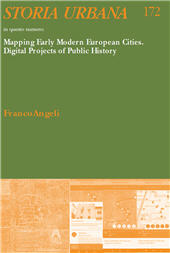A Peek Behind the Façade : the Virtual Interiors Approach to Visualise Herengracht 573 in the 17th century
79-98 p.
The Amsterdam City Archives have launched a vast plan for the digitization of notarial deeds and other historical documents with the aim of making their collection available and fully searchable online. This and other initiatives provide a large amount of previously unknown data about the city of Amsterdam and its inhabitants over the centuries. The challenge ahead is to organize these thousands of digitized documents in a way that facilitates access and consultation by a larger public. The spatial information that can be extracted with varying degrees of accuracy from these documents allows them to be mapped to reconstruct urban historiographies and geographies. This contribution takes the house as a starting point for this spatialization and discusses the approach of the Virtual Interiors project which aims to create virtual reconstructions of XVII century domestic interiors that act as interfaces to access the archival documents used as primary sources for their creation.
The case study that will be presented in detail is Herengracht 573 in the Amsterdam historical centre.ll be demonstrated with the reconstruction of the XVII century entrance hall, a prototype web viewer developed as part of the project integrates the 3D models and contextual information, thus giving direct access to digitized archive documents. This approach would offer a way to organize the sources about this and other houses and to make the stories hidden behind the façades known to a larger public even when these historical buildings are closed. [Publisher's text].
L'Archivio della città di Amsterdam ha avviato un vasto piano di digitalizzazione di atti notarili e altra documentazione storica con l'intento di rendere i fondi d'archivio accessibili online e ricercabili parola per parola. Questa e altre iniziative stanno met-ÂÂ tendo a disposizione del pubblico una grande mole di informazioni prima sconosciute sulla città di Amsterdam e i suoi abitanti nel corso dei secoli. Le migliaia di documen-ÂÂ ti digitalizzati devono essere però organizzate in modo tale da facilitarne l'accesso e la consultazione.formazioni spaziali che possono essere estratte con gradi variabili di accura-ÂÂ tezza da questi documenti permettono di mapparli per ricostruire storiografie e geogra-ÂÂ fie urbane.
Questo contributo prende la casa come punto di partenza per questa spazia-ÂÂ lizzazione e discute l'approccio del progetto Virtual Interiors che si propone di creare ricostruzioni virtuali di interni domestici del XVII secolo che fungano da interfaccia d'accesso ai documenti d'archivio usati come fonti primarie per la loro creazione. Il caso di studio che verrà presentato nei dettagli è Herengracht 573 nel centro storico di Amsterdam. Come verrà dimostrato con la ricostruzione della sala d'entrata seicentesca, il pro-ÂÂ totipo di un web viewer sviluppato nell'ambito del progetto integra i modelli 3D e le informazioni contestuali, dando accesso diretto ai documenti d'archivio digitalizzati. [testo dell'editore].
Fait partie de
Storia urbana : rivista di studi sulle trasformazioni della città e del territorio in età moderna : 173, 3, 2022-
Articles du même numéro (disponibles individuellement)
-
Informations
Code DOI : 10.3280/SU2022-173006
ISSN: 1972-5523
KEYWORDS
- Ricostruzioni virtuali XVII secolo Amsterdam, Interni domestici, Edifici storici
- Virtual Reconstructions, XVII Century, Amsterdam, Domestic Interiors, Historical Buildings


